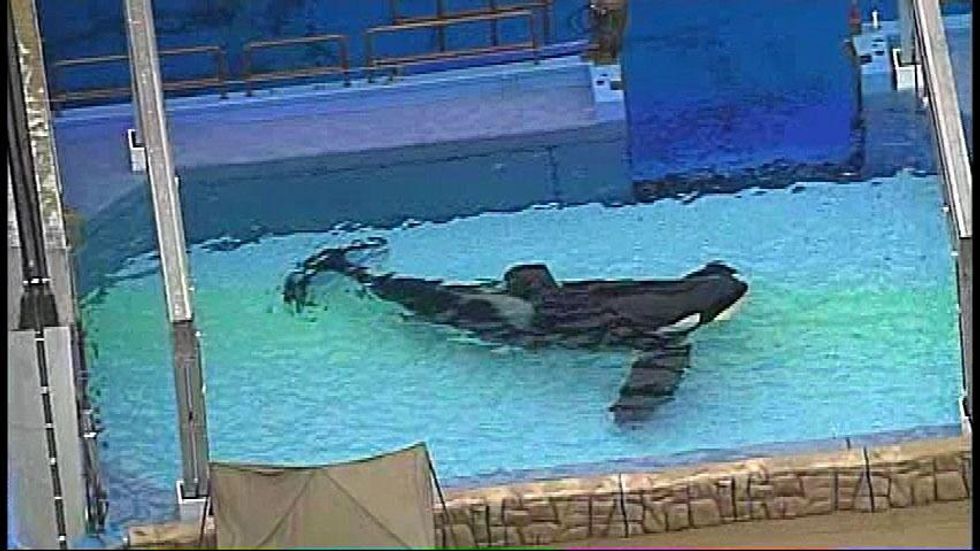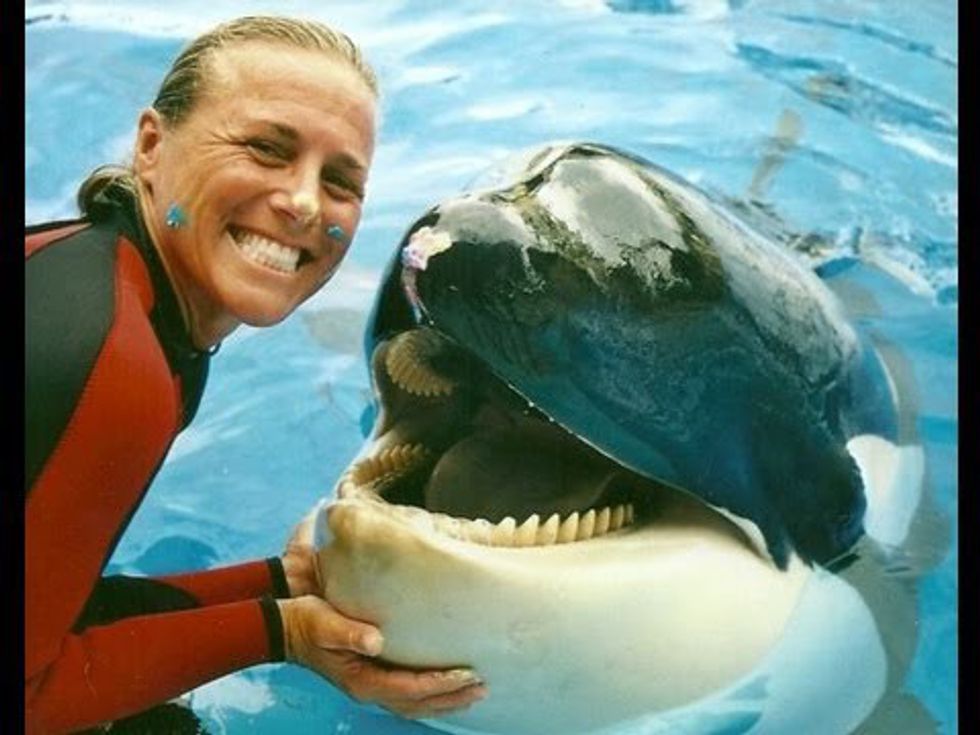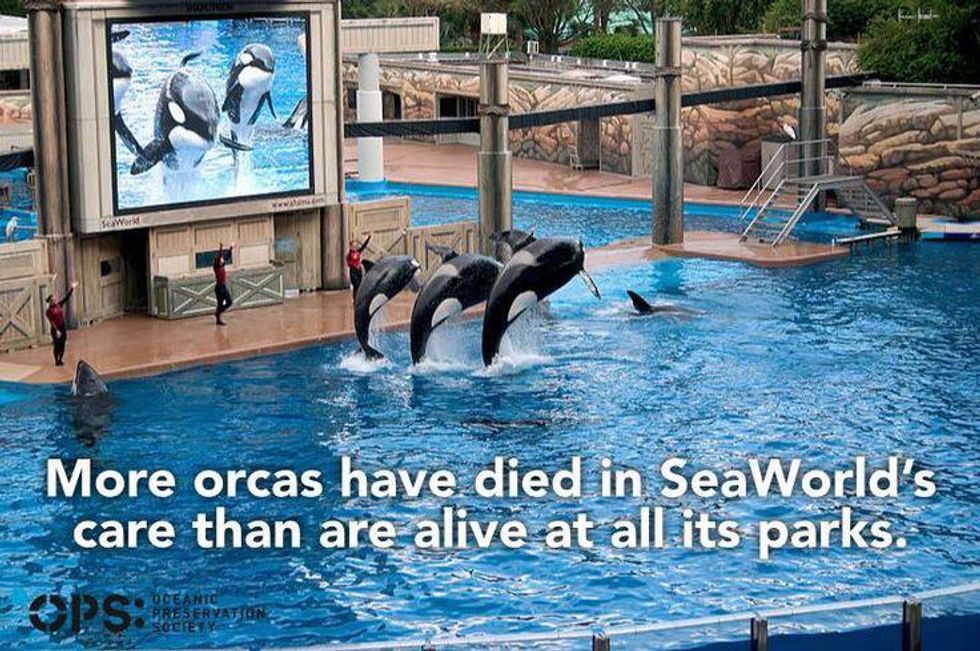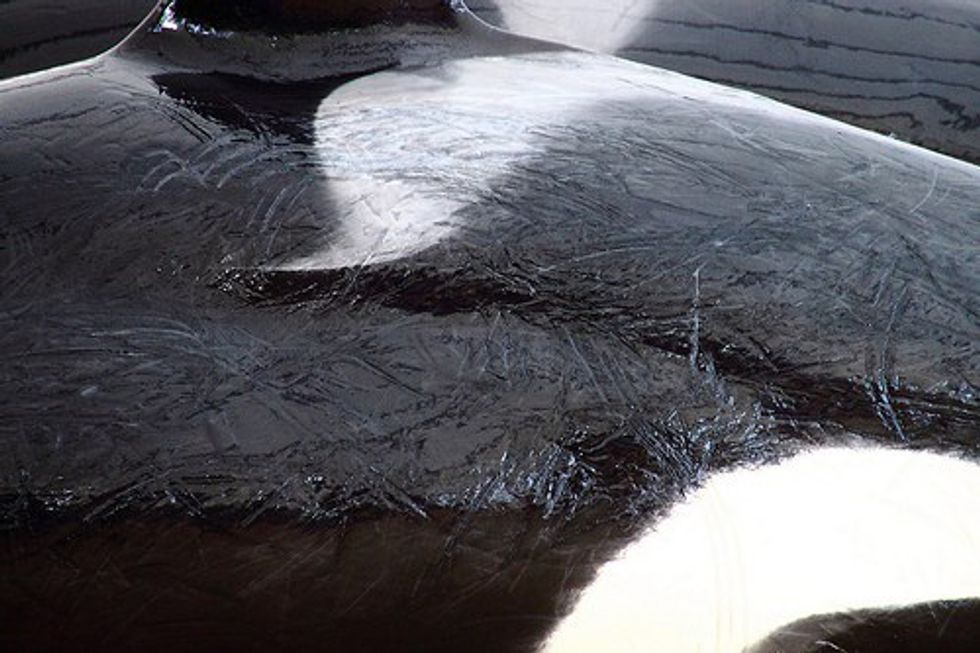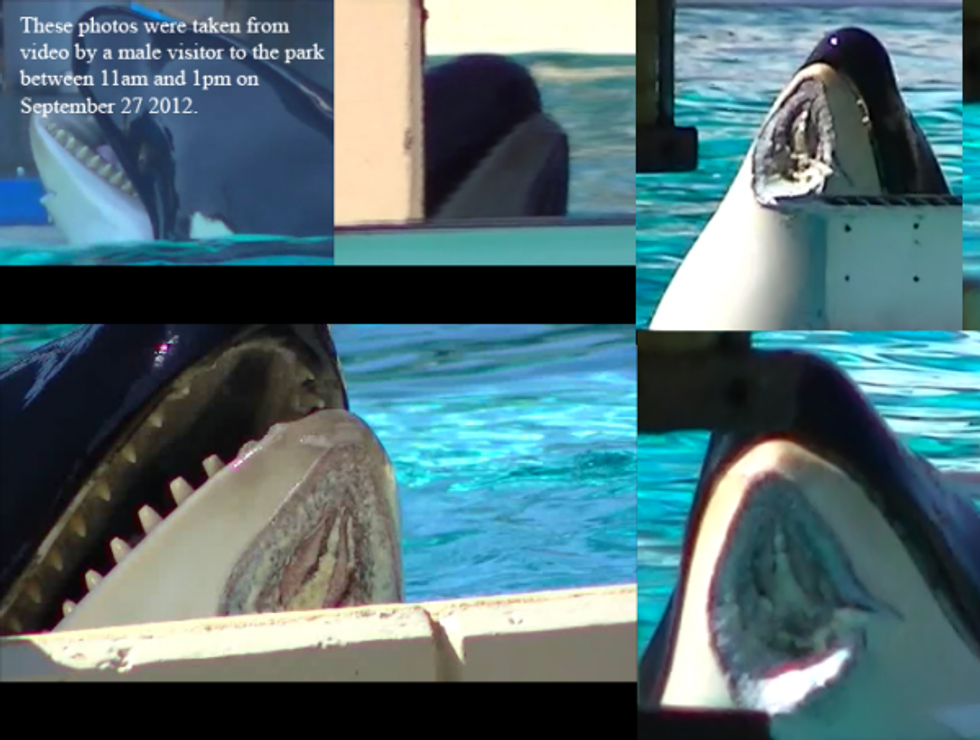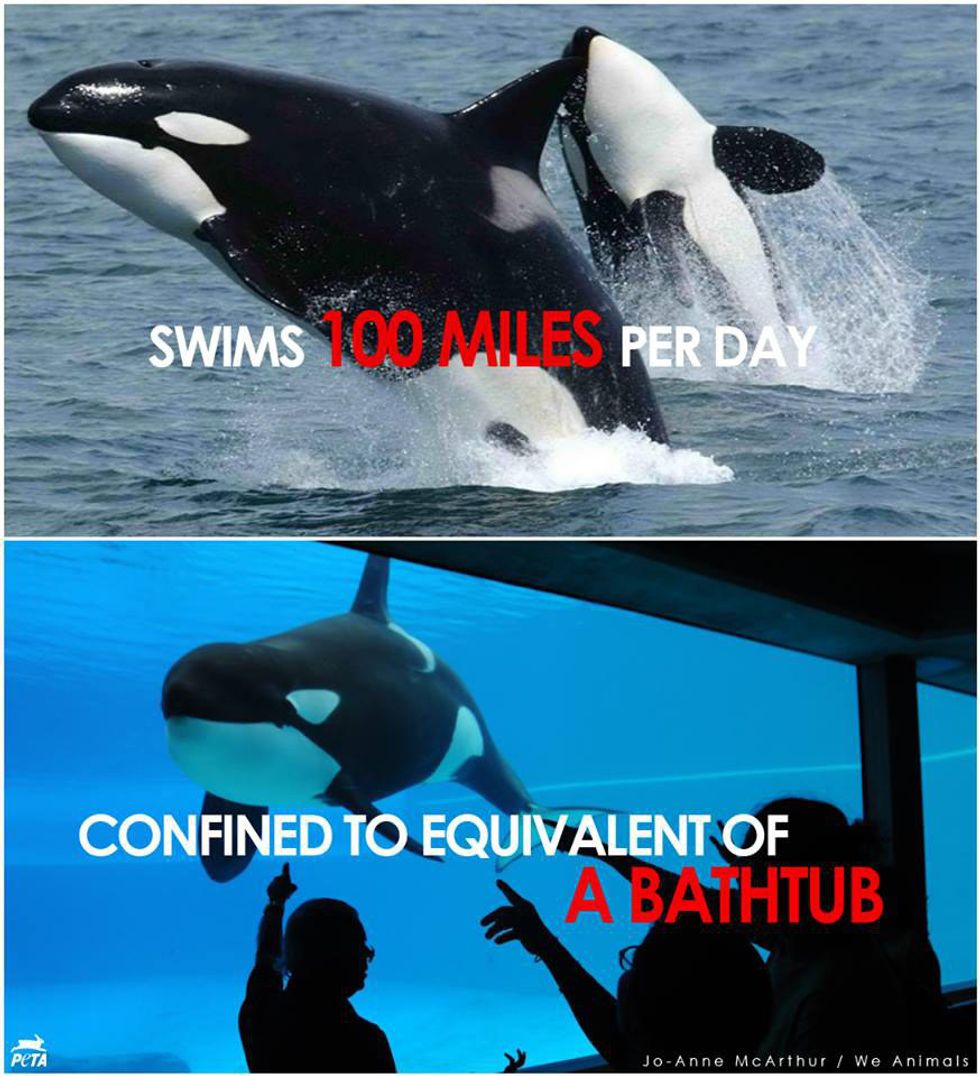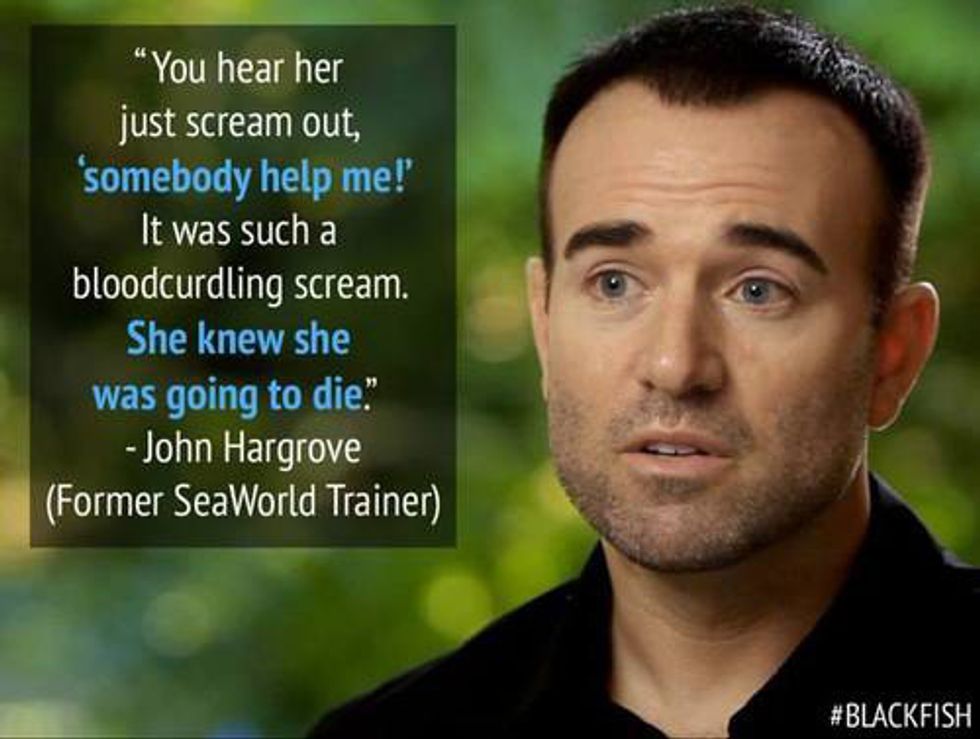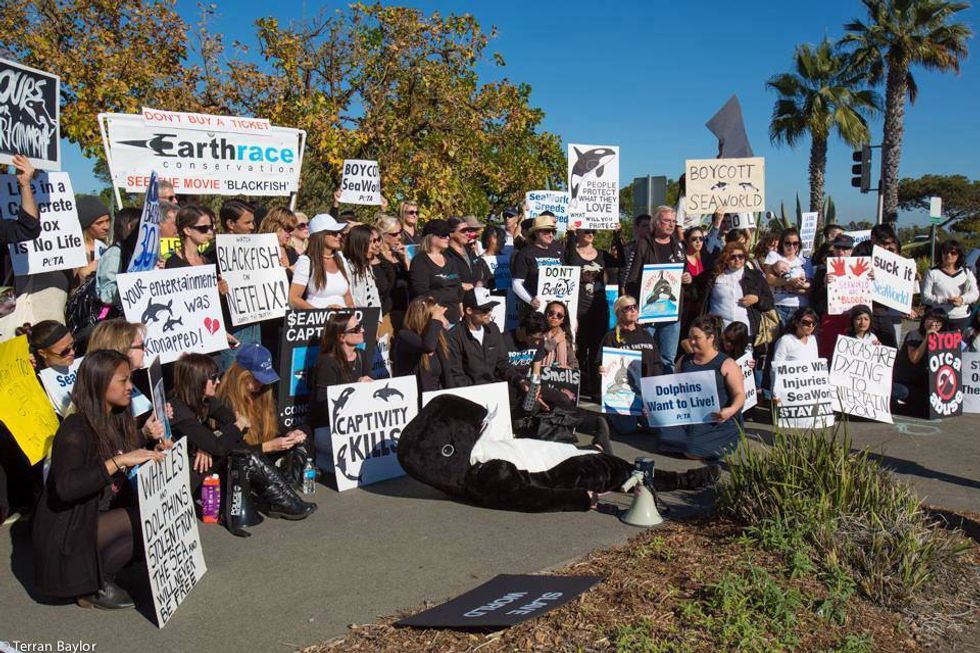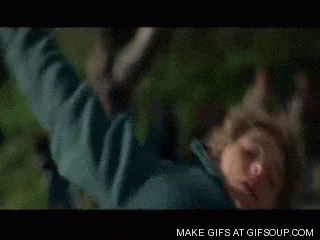I remember the first time I watched Free Willy when I was young.
Just like any other child entranced by the beautiful orca, I cheered and cried when Willy jumped over the barrier and Jesse to be free in the ocean with his family once again. I never imagined SeaWorld would ever inflict that type of abuse on their animals—I loved that place. Unfortunately, SeaWorld is much worse. I love Shamu, the 'splash zone,' and being able to observe these amazing creatures up close. But I will never go to SeaWorld again.
In 2010, Tilikum the orca dismembered and ultimately drowned veteran trainer Dawn Brancheau—his third victim in twenty years. After a year of complete isolation in a bathtub-sized tank, Tilikum was performing SeaWorld shows.
Almost immediately after the tragic incident, activists began to reveal the atrocities that occur within the park. The book Death at SeaWorld follows marine biologists and former trainers as they divulged the tarnish under SeaWorld's glossy image.
In 2013, Blackfish compiled hundreds of hours of film, interviews with over seven former employees, and more to create an 83-minute documentary that captured the hearts of animal activists and the general public everywhere. The movie exposed videos from the killer whales' ruthless capture to their heartbreaking abuse within the bright-colored walls of one of America's favorite theme parks. Withholding meals until the orca performs a trick correctly, stuffing multiple orcas into miniscule pools with no light, and separating young orcas from their mothers only barely begins to reveal the brutality of their captivity.
After the documentary gained popularity thanks to several airings on CNN and presence on several streaming websites, SeaWorld experienced several setbacks. Bands to this day cancel their shows at the theme park due to moral reservations, over 24 companies have withdrew sponsorships—including NFL's Miami Dolphins and Southwest Airlines, and attendance has dropped significantly.
Despite these displays of disapproval over SeaWorld's treatment of their animals, the cruelty continues. How bad is it? Well, let's take a look.
All captive adult males orcas at SeaWorld sport a collapsed dorsal fin—which SeaWorld swears up and down is normal in the wild. In reality, only 1% of wild orca's dorsal fins are collapsed and it is a sign that they are injured or sick.
Although they claim to support a “healthy social structure," calves are taken from their mothers at four years old to be relocated to another park. In the wild, orcas stay with their family their whole lives.
The orcas at SeaWorld are kept in such tight spaces that they often attack each other due to stress and anxiety, leading to many scars and health problems. This is not documented in their natural habitat.
Everyday, free orcas swim around 100 miles in the ocean. At SeaWorld, the orcas swim around 1,500 laps a day which leads to psychotic, self-damaging behavior such as ramming themselves against the tanks and chewing on the sides.
Despite contrary claims, SeaWorld has contributed less than 1 percent of its profits to conservation, rehabilitation, and rescue efforts…in the past decade.
The oldest living orca in the wild is a 103-year old female named Granny, who still keeps up with her pod's movements. Most orcas live up to 90-years old in the wild. Only five captive orcas at SeaWorld are more than 30-years old, most die in their teens, the median age of life span is 9-years old, and not one has ever died of natural causes.
The new tanks SeaWorld are creating to help improve their public image are a maximum of 50 feet in depth and 350 feet in length. The wild orcas dive up to 1,000 feet in depth and swim up to 100 miles daily. Comparable? Don't think so.
So why is all of this information coming up again? On March 24th, former SeaWorld trainer John Hargrove published a book—Beneath the Surface: Killer Whales, SeaWorld, and the Truth Beyond Blackfish—that delves deeper into the atrocities committed than Blackfish was able to do in 83-minutes. It's already a #1 best seller. Hargrove worked with 20 different whales at two different SeaWorld locations during his time with the company.
In the book, Hargrove humanizes the orcas—detailing their behavior and relationships—and reviews their treatment at the SeaWorld facilities. Furthermore, Hargrove discusses a time in which a trainer's neck was broken during a live show. In order to prevent audience panic or public scrutiny, SeaWorld forced the trainer to walk with a broken neck to the trainer offices and then the ambulance (conveniently hidden from the public) before she was medically assisted. She sued for negligence, which SeaWorld responded with a settlement and a gag order.
Recently, customers who claimed they never would have purchased tickets for the theme park if they had known the appalling conditions the orcas were kept in filed a class-action lawsuit against SeaWorld. In September 2014, another lawsuit against SeaWorld argued it misled investors when it denied any financial backlash after the release of Blackfish. Clearly, this movement is gaining traction and SeaWorld is scrambling to stay afloat.
So for Willy, Shamu, Tilikum, and every other orca wrongfully captured and abused in order to provide entertainment, I will never return to SeaWorld. No human or animal deserves to endure the irrefutably horrific treatment these animals suffer. The public should no longer stand for this. Whether it is taking an active role to defend the orcas or just simply not buying a ticket to SeaWorld, you can make a difference. Let's free Willy.
You can watch Blackfish on Netflix.
Visit this website for more information:




